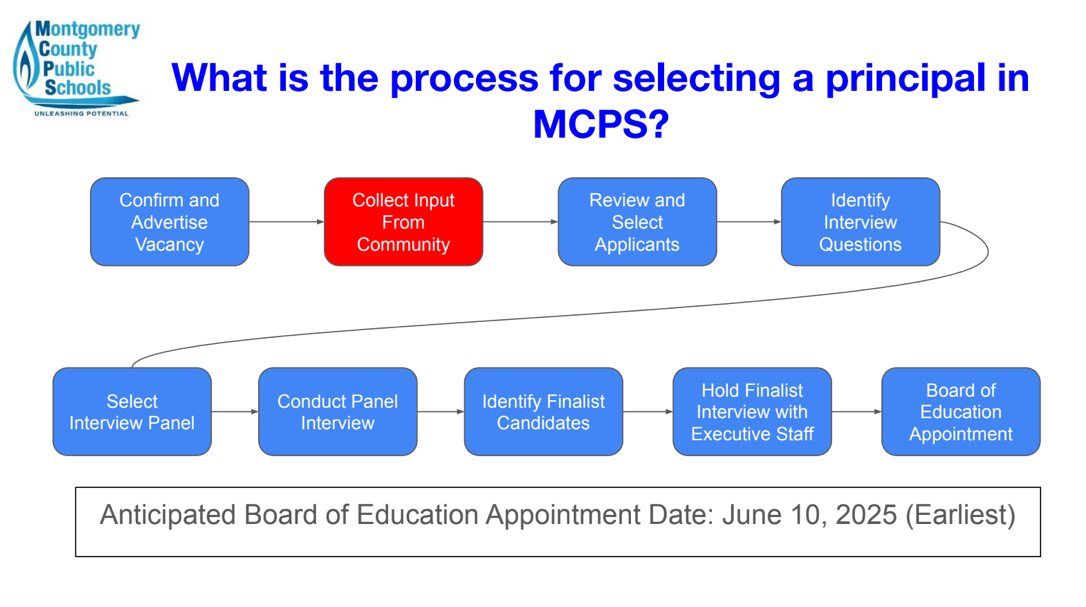Montgomery County Public Schools’ (MCPS) nutritional program was recently revealed to be sub-par after local coalition Healthy School Food Maryland (HSFM) awarded it with a “C+” in its 2016 School Food Environment Report Card.
Healthy School Food Maryland assessed the food quality for all 24 Maryland school districts, judging them based on 12 key areas deemed of importance to parents and school communities. These key areas include: A la carte transparency (availability of information about foods offered by school cafeterias), general transparency (availability of nutrition information), quality of food sold in vending machines, presence and utility of a wellness committee, water accessibility, presence of farm-to-school programs, whether or not school meals are made from scratch, menu variety, added sugar levels, presence of a salad bar, chemical regulation and marketing.
The report, released on Dec. 18, rated each district, from one to four, based on how well they met HSFM’s standards for each category. Using the school districts’ total numerical scores, the coalition assigned each school district a corresponding letter grade using a normal bell curve to represent the state of their school food policies.
The school district with the highest score was Howard County, which was the only school district to receive an “A+” rating, largely due to their high a la carte transparency, vending machine quality and farm-to-school program. In comparison, MCPS did not perform as well, earning the 14th highest score out of 24 other school districts. While MCPS proved to have adequate a la carte transparency and a strong farm-to-school program, they were lacking in general transparency, vending machine stock and use, water availability, homemade cooking and marketing. Although MCPS’ chemical use was rated as a two, they still managed to receive the highest chemical rating out of all districts. “Kudos to Montgomery County, the sole school system in the state with a policy that goes beyond federal regulations, prohibiting certain chemicals such as MSG, BHA, TBHQ and several synthetic food dyes and artificial sweeteners in their food,” the coalition said in its report.
Based on MCPS’s performance in this report, it seems as if the county’s nutritional policy is fairly average in comparison to the rest of the state. However, it is important to note that none of the districts earned more than 60 percent of total points available, demonstrating a clear need for nutritional policy change. HSFM’s primary reasoning behind creating this report was to draw attention to such issues in hopes of motivating policy change toward healthier state-wide nutritional standards.
Current state nutritional policy, last updated in 2014, dictates that in order for a food to be sold in a Maryland school, it must be either whole-grain rich, have a fruit, vegetable, dairy product or protein food as its first ingredient, or be a combination of food that consists of at least one fourth of a cup of a fruit and/or vegetable. In addition, foods sold in schools must meet a series of nutritional standards, such as total calories, sodium, fat and sugar content. The state also has banned certain food products completely, such as soda, anything containing caffeine beyond the natural level and fruit juices with added sweeteners.
MCPS’s nutritional policy, last updated in 2015, is nearly identical to the state standards. However, MCPS has added a few additional regulations, such as prohibiting the sale of donuts or candy of any type on school property and requiring that the pricing of foods promotes healthy choices. “Montgomery County Public Schools is committed to creating a school culture that promotes and protects children’s health, well being and ability to learn by supporting healthy eating and physical activity,” MCPS says on its website.
Here students have recognized the poor nutritional quality of school-sold foods and often opt to bring their own lunch instead of purchasing it from the cafeteria. “I feel like the food [sold in the cafeteria] is not fresh or that healthy,” senior Cecilia Sun said.
Sarah Greenberg
Senior News Editor








